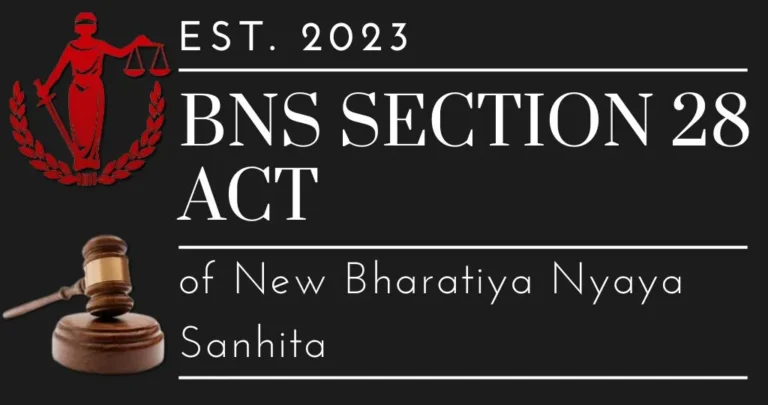
Understanding Section 227 of the Bharatiya Nagarik Suraksha Sanhita, 2023: Commencement of Proceedings Before Magistrates
Interpretation of Section 227 of the Bharatiya Nagarik Suraksha Sanhita, 2023: Initiation of Proceedings in Front of Magistrates
The Bharatiya Nagarik Suraksha Sanhita, 2023, superseded the Criminal Procedure Code and entered into force on July 1, 2024. This new law will streamline criminal procedure laws in India to make them more efficient and tech-friendly. One of the key sections in this Sanhita is Section 227, and it is one that addresses the initiation of proceedings before Magistrates. The section describes the process under which a Magistrate should proceed when he takes cognizance of an offence and under what conditions a Magistrate may issue summons or warrants against the accused.
Adequate Grounds for Proceeding: When the Magistrate Takes Cognizance
For More Updates & Regular Notes Join Our Whats App Group (https://chat.whatsapp.com/DkucckgAEJbCtXwXr2yIt0) and Telegram Group ( https://t.me/legalmaestroeducators ) contact@legalmaestros.com.
Section 227(1) provides that upon taking cognizance of an offence by a Magistrate, they shall decide whether there are reasonable grounds for proceeding against the accused. “Taking cognizance” basically implies that the Magistrate acknowledges the fact of an offence on the basis of a complaint or information laid and decides to consider the case further. If the Magistrate is satisfied that there is sufficient evidence or cause to proceed, they can go ahead and initiate proceedings based on the type of case.
For example, where one complains to the effect that the neighbor makes a public nuisance out of blasting loud music late into odd hours of the day, the Magistrate will preliminarily scrutinize if such complaint does exhibit sufficient grounds warranting prosecution to continue. Assuming satisfied, the Magistrate shall then rule as to the suitability of issuing the right type of orders—warrants or a summons.
Cases of Nature and Grant of Summonses or Warrants
Section 227(1) also sets out the Magistrate’s action depending on the nature of the case:
Summons-Case: If the offence is a summons-case (less severe offences), the Magistrate will send a summons to the accused, calling them to appear in court. For instance, minor assault or defamation cases would normally be dealt with as summons-cases, where the accused would be sent a notice to appear in court without fear of arrest.
Warrant-Case: In case of a warrant-case (more serious offences), the Magistrate can issue a warrant for arrest. Nevertheless, if the Magistrate feels it is appropriate, they can choose to issue a summons rather than a warrant. For instance, in the case of theft, the Magistrate might prefer to issue a warrant so that the accused is produced before the court. If the situation indicates that the accused will not be a flight risk, the Magistrate may decide to issue a summons in lieu of a warrant.
The discretion of the Magistrate provides for room to maneuver when making a decision to issue a summons or a warrant based on the particularities of the case.
Issuance of Summons or Warrants by Electronic Means
The proviso to Section 227(1) adds a contemporary touch by enabling summons or warrants to be issued electronically. This provision is intended to streamline the legal process, cutting down on delays in serving notices and utilizing technology to enhance the efficiency of the judicial system. For instance, if a summons has to be issued to an individual who lives in another city, the court can issue it electronically, so that it reaches the individual sooner.
Filing of List of Prosecution Witnesses
Section 227(2) provides that the Magistrate shall not issue a summons or warrant against the accused unless the list of witnesses is filed by the prosecution. This ensures that the accused is properly informed of the case against them and can prepare for their defense. For instance, in a case of fraud against an individual, the prosecution must first present a list of witnesses against the accused before the court can issue any warrant or summons.
Documents to be Accompanied with Written Complaint Cases
When a complaint is filed in writing, Section 227(3) requires that a copy of the complaint be attached to every summons or warrant issued. This makes it transparent and enables the accused to know the precise charges against them. For example, if a written complaint alleges environmental offenses by a company, the summons to the representatives of the company must be accompanied by a copy of the complaint detailing the precise accusations.
Requirement of Payment of Fees
Subsection 227(4) provides that where process fees or other fees are payable under any law in operation, no process shall be issued until such fees are paid. If the fees are not paid within a reasonable period, the Magistrate may at his discretion dismiss the complaint. This requirement ensures that frivolous or insubstantial cases are not pressed at the cost of the time of the judicial system. For instance, if a complaint is filed privately but the fees required are not paid, the Magistrate might choose to dismiss the case.
Exception: Effect of Section 90 on Issuance of Summons or Warrants
Lastly, Section 227(5) makes it clear that nothing contained in this section shall be deemed to affect Section 90 of the Bharatiya Nagarik Suraksha Sanhita, which permits a Magistrate to issue a warrant instead of, or in addition to, a summons. This implies that even if a summons has already been issued, the Magistrate still has the power to issue a warrant if the situation demands such a move. For example, if there is new evidence that emerges which indicates that the accused may escape court proceedings, the Magistrate may issue a warrant to ensure their presence.
Conclusion
Section 227 of the Bharatiya Nagarik Suraksha Sanhita, 2023, provides a clear procedure for initiating criminal proceedings before the Magistrates. It ensures systematically that legal procedures are carried out, with adequate grounds for proceeding, and that accused persons are provided with proper notice and information regarding the alleged offenses against them. Technology, like electronic issuance of summons or warrants, incorporated into the Sanhita seeks to increase accessibility and efficiency in the justice system.
This part insists on procedural protections, like the submission of witness lists and fees payment, to ensure the integrity of the judicial process. It also provides for flexibility in serving summons or warrants, taking into account the gravity of the offence and other factors, while maintaining provisions for rare cases under Section 90. These reforms as a whole bring the criminal justice process up to date and make it more attuned to society’s needs.






